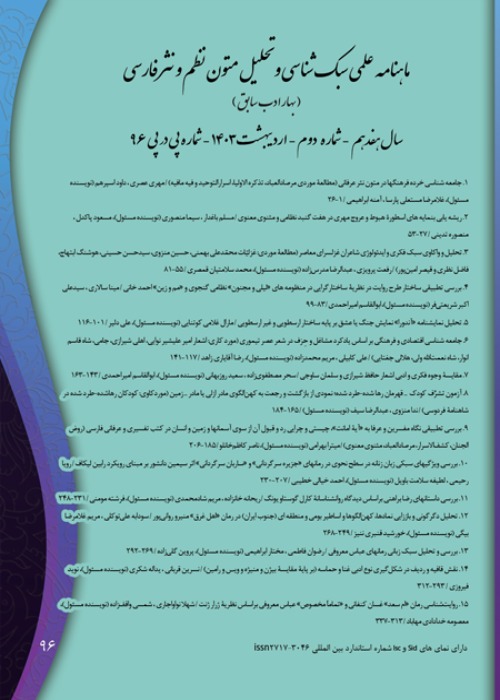Introducing the manuscript of Soleimannameh and examining its features
A unique manuscript of Suleimannameh in the form of Masnavi and the convergent sea, by Yusuf ibn Siraj ibn Muhammad, nicknamed the teacher in 1339. It was composed in 8352 bits and written in Naskh script. The name of this anonymous poet does not appear in any literary memoir. This Masnavi is a religious epic that tells the stories of the prophets of the nation of BaniIsaiah, including Soliman, Elias, Elisha, Jeremiah, Dhu'l-Kufl, Yones, and Daniel. The present article introduces the manuscript of this epic-educational system. The main question of the research is what literary, linguistic, cultural, moral, social, and religious components are in this version and what information can be obtained from the author's time? This article also examines the stylistic and aesthetic features of the version, and since this version is unique, the recording of distorted verses has been done on the basis of stylistic symmetries and, of course, with the preservation of fidelity.
The research method in this article is descriptive-analytical and the data collection method is documentary (library).
The manuscript of Suleiman the Magnificent was written in the convergent sea of the deleted Muthanna and tells the stories of the prophets of Israel. The poet does not have a stylistic personality in the order of these stories, but examples of Khorasani style are evident in this poem. In this Masnavi, for the first time, the stories of the prophets of Israel are arranged; The stories that are still scattered in the books of commentaries on the Qur'an, the stories of the prophets, the chronicles and the stories of the prophets of the Torah, and many of them are unfamiliar to Muslim readers.
In this poem, there is no mention of the city in which the poet lived, and the place of the poem can not be found in the text of the story, but the use of some words indicates the specific dialect of the region; As in Neishabour, such conversations are common. Regarding the stylistic and lexical features of the text, it should be said that all the mentioned features, except for two cases, including the use of the verbs "Danstmani" and "Avrdman" and the observance of the rule of signifier, which is related to the sixth and seventh centuries, The fourth and fifth are especially Shahnameh.
- حق عضویت دریافتی صرف حمایت از نشریات عضو و نگهداری، تکمیل و توسعه مگیران میشود.
- پرداخت حق اشتراک و دانلود مقالات اجازه بازنشر آن در سایر رسانههای چاپی و دیجیتال را به کاربر نمیدهد.



